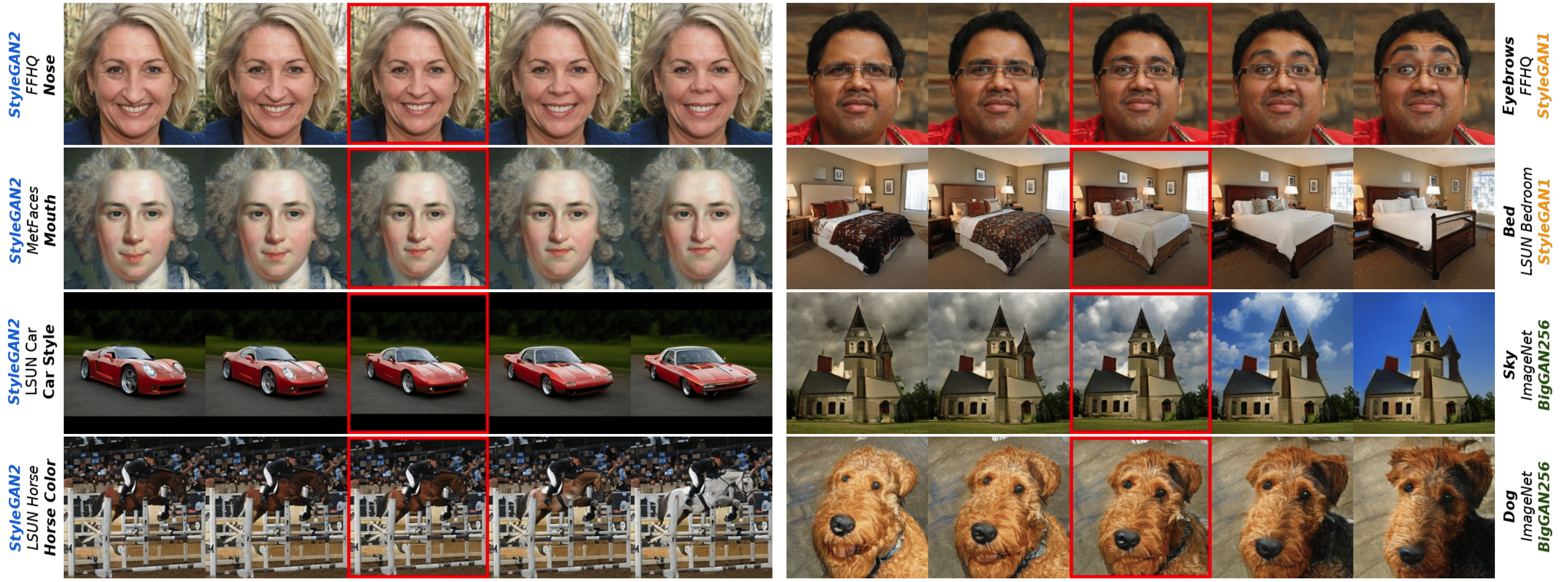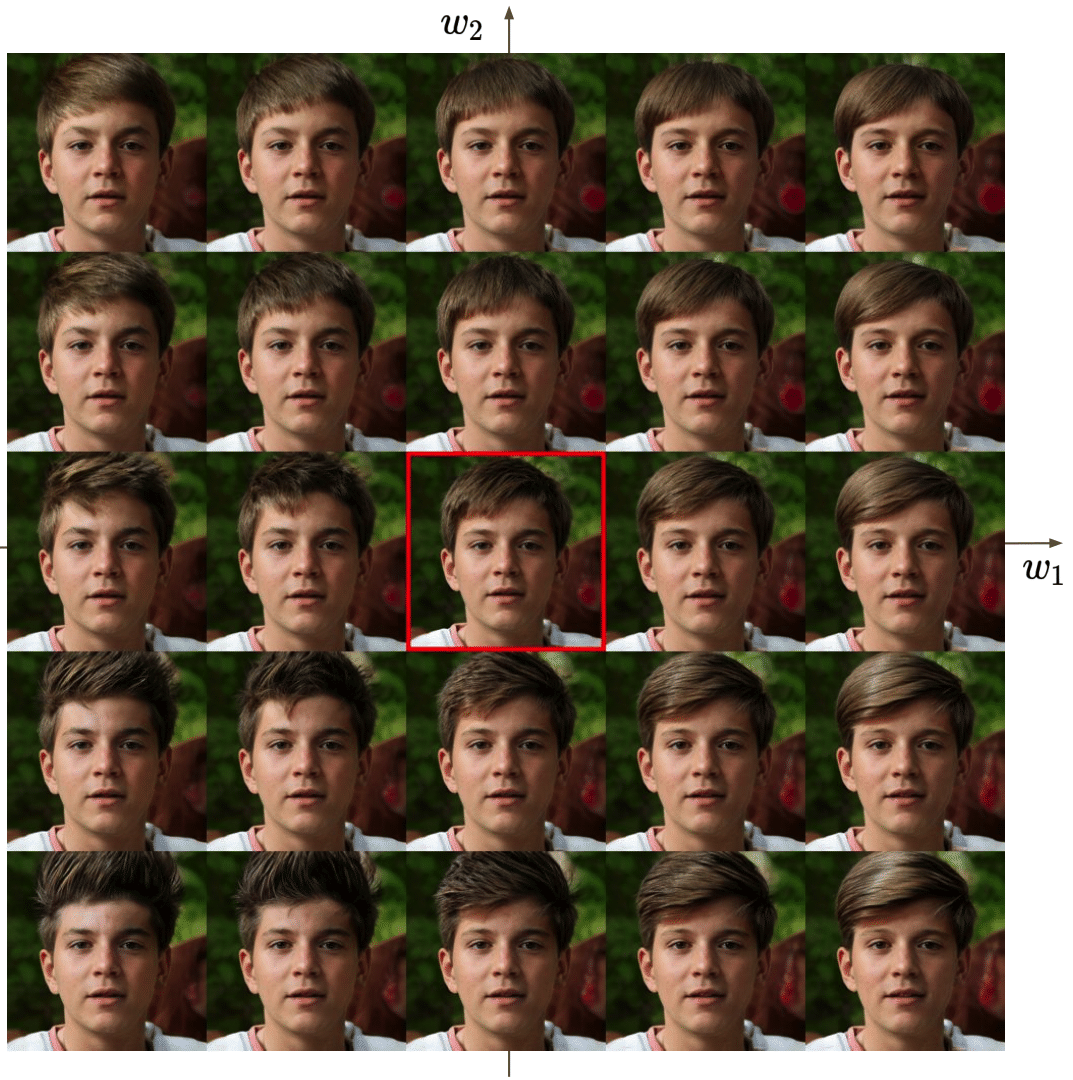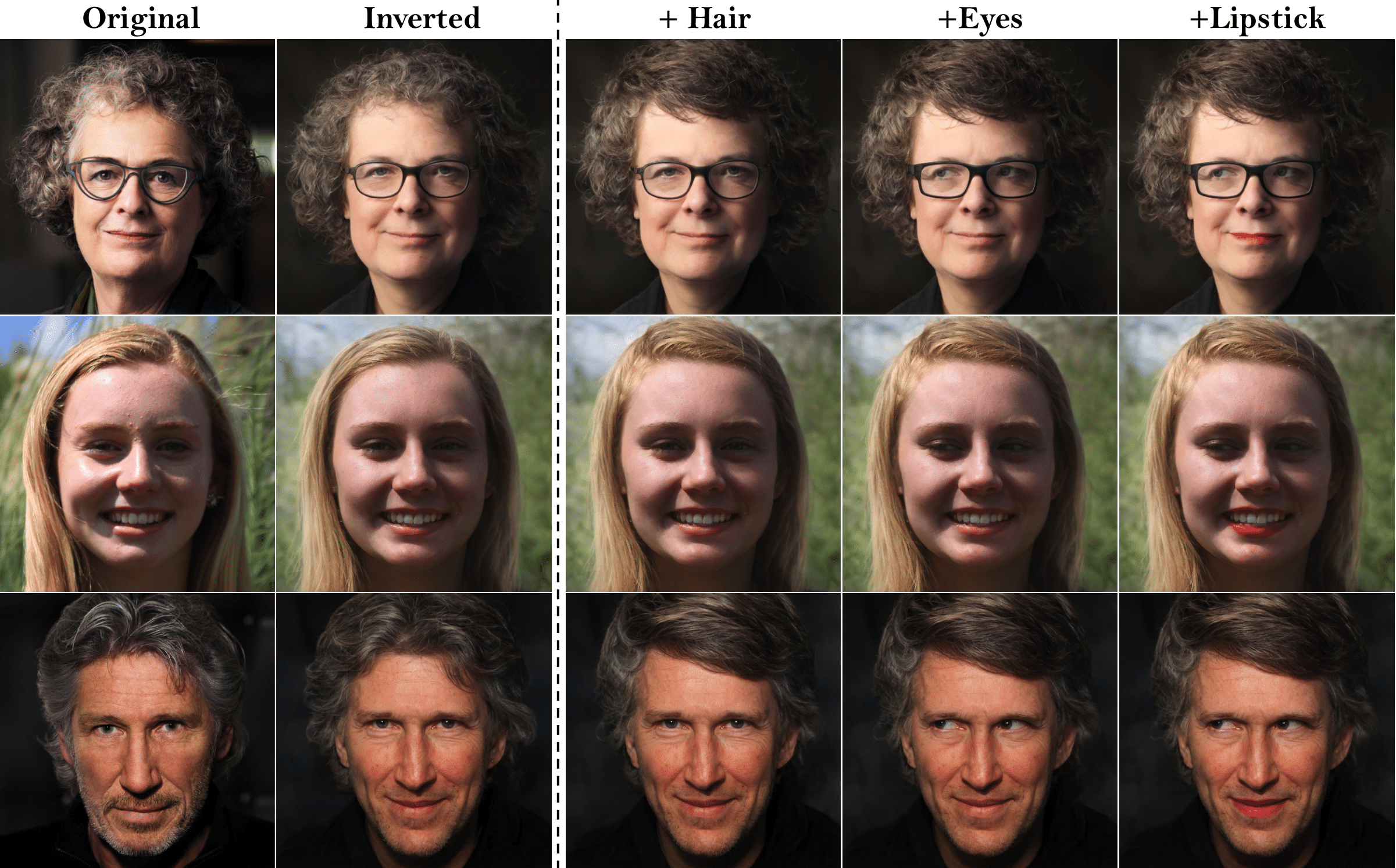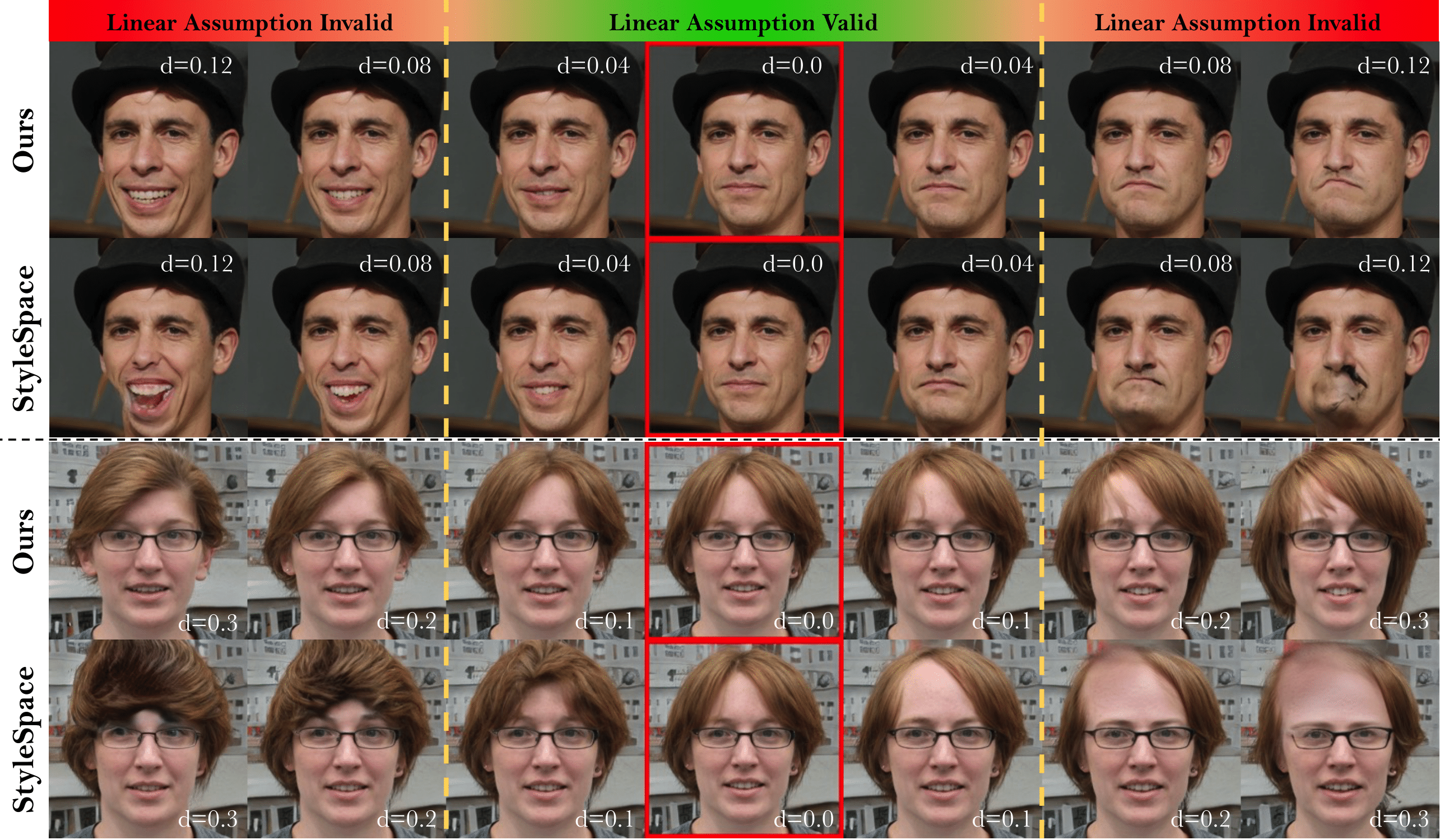 Optimizing Latent Space Directions For GAN-based Local Image Editing
Optimizing Latent Space Directions For GAN-based Local Image Editing
Ehsan Pajouheshgar, Tong Zhang, and Sabine Süsstrunk
You can find our paper on arxiv.
Abstract: Generative Adversarial Network (GAN) based localized image editing can suffer ambiguity between semantic attributes. We thus present a novel objective function to evaluate the locality of an image edit. By introducing the supervision from a pre-trained segmentation network and optimizing the objective function, our framework, called Locally Effective Latent Space Direction (LELSD), is applicable to any dataset and GAN architecture. Our method is also computationally fast and exhibits a high extent of disentanglement, which allows users to interactively perform a sequence of edits on an image. Our experiments on both GAN-generated and real images qualitatively demonstrate the high quality and advantages of our method.
- Now we support all StyleGAN models including Alias-Free GAN (StyleGAN3).
- We also support BigGAN model.
- To find more information on how to get the pretrained segmentation, and GAN models, check out the pretrained/ directory
- We support using few-shot pretrained segmentation models introduced in the paper Linear Semantics in Generative Adversarial Networks
Our requirements are very similar to the requirements from StyleGAN3 repo.
- Linux and Windows are supported, but we recommend Linux for performance and compatibility reasons.
- 1–8 high-end NVIDIA GPUs with at least 12 GB of memory.
- 64-bit Python 3.8 and PyTorch 1.9.0 (or later). See https://pytorch.org for PyTorch install instructions.
- CUDA toolkit 11.1 or later.
- GCC 7 or later (Linux) or Visual Studio (Windows) compilers. Recommended GCC version depends on CUDA version, see for example CUDA 11.4 system requirements .
- Python libraries: see environment.yml for exact library dependencies. You can use the following
commands with Miniconda3 to create and activate your LELSD Python environment:
conda env create -f environment.ymlconda activate stylegan3
- Docker users:
- Ensure you have correctly installed the NVIDIA container runtime.
- Use the provided Dockerfile to build an image with the required library dependencies.
Follow the guides in the pretrained/ directory to download the models that you want. You can also use your own pretrained segmentation and GAN models.
In the notebooks folder you can find a sample jupyter notebook for training LELSD model on StyleGAN2 models pretrained on FFHQ, MetFaces, LSUN Church, LSUN Car, and LSUN Horse dataset. Based on this, you create your own notebook to train LELSD on your own pretrained GAN.
We provide three simple apps that you can use to generate figures similar to the ones that we present in the paper. The apps are easy to use. You can choose the GAN model and the dataset, then it will scan the folder you use to store the trained LELSD models and find the last model for each semantic.
streamlit run 2D_visualization.py
Using this app you can combine two directions found by the model for editing the same semantic and create a palette of edit like figure bellow. Based on this palette you can choose the edit strengths that will yield your desired edit. Note that you need to have a LELSD trained model with num_latent_dirs=2 to use this app.
streamlit run sequential_editing.py
Using this app you can stack sequences of edits to generate a figure like this. Note that in this figure we're editing real photographs and use e4e for GAN inversion.
streamlit run model_comparison.py
Using this app you compare different models with each other. We allow comparing
- LELSD models trained with different configs
- Random directions in the latent space
- Directions found in the StyleSpace Analysis paper
You can check the equally spaced LPIPS button to generate a figure similar to the one we've used in the paper.
We borrow a lot from these repositories:
StyleGAN2-ADA — Official PyTorch implementation
https://github.com/NVlabs/stylegan2-ada-pytorch
Alias-Free Generative Adversarial Networks (StyleGAN3)
https://github.com/NVlabs/stylegan3
DeepLab with PyTorch
https://github.com/kazuto1011/deeplab-pytorch
face-parsing.PyTorch
https://github.com/zllrunning/face-parsing.PyTorch
Linear Semantics in Generative Adversarial Networks
https://github.com/AtlantixJJ/LinearGAN
PyTorch pretrained BigGAN
https://github.com/huggingface/pytorch-pretrained-BigGAN
Localized Semantic Editing of StyleGAN outputs
https://github.com/IVRL/GANLocalEditing
@inproceedings{pajouheshgar2022optimizing,
title={Optimizing latent space directions for gan-based local image editing},
author={Pajouheshgar, Ehsan and Zhang, Tong and S{\"u}sstrunk, Sabine},
booktitle={ICASSP 2022-2022 IEEE International Conference on Acoustics, Speech and Signal Processing (ICASSP)},
pages={1740--1744},
year={2022},
organization={IEEE}
}
This work is licensed under a Creative Commons Attribution-NonCommercial-ShareAlike 4.0 International License.




